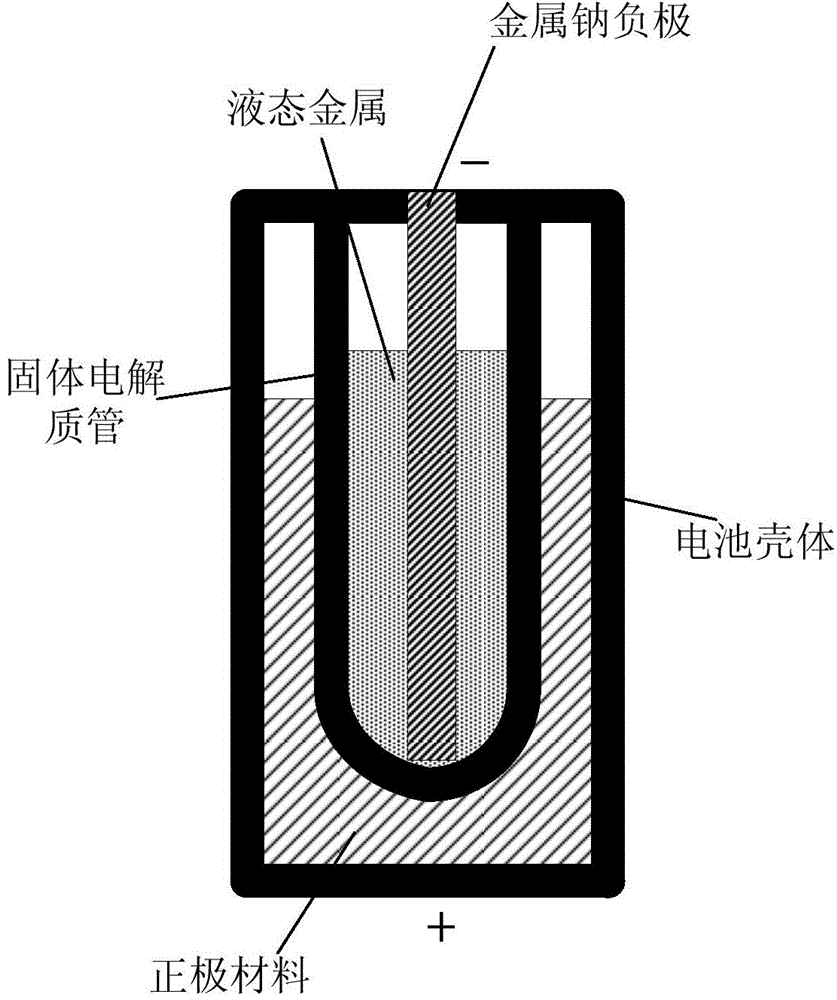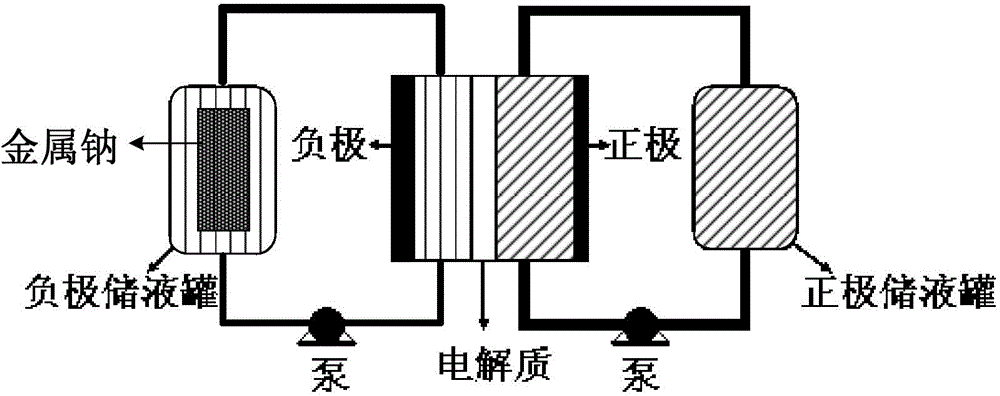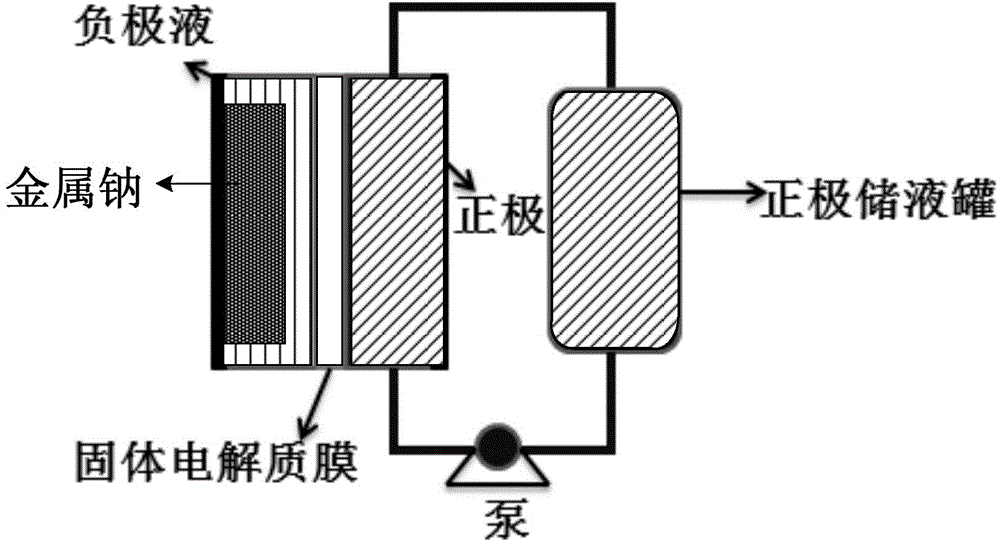Secondary battery, application and preparation method of negative electrode of secondary battery
A secondary battery and negative electrode technology, applied in secondary batteries, battery electrodes, circuits, etc., can solve problems such as side reactions, dendrite growth, large interface resistance, etc., achieve high safety, increase energy density, and long cycle life Effect
- Summary
- Abstract
- Description
- Claims
- Application Information
AI Technical Summary
Problems solved by technology
Method used
Image
Examples
Embodiment 1
[0051] This embodiment is used to illustrate the structure of the secondary battery provided by the present invention.
[0052] The secondary battery provided by the present invention includes solid metal sodium or lithium or potassium, conductive liquid metal, solid electrolyte, positive electrode material and battery case:
[0053] The solid metal sodium or lithium or potassium and the conductive liquid metal are housed in the solid electrolyte, or the solid metal sodium or lithium or potassium and the conductive liquid metal are filled in the battery case Between the solid electrolyte; the solid metal sodium or lithium or potassium together with the conductive liquid metal constitute the negative electrode of the secondary battery; this negative electrode design has a higher capacity than only using the conductive liquid metal as the negative electrode. The energy density of the battery is greatly improved; at the same time, placing the solid metal sodium in the conductive ...
Embodiment 2
[0067] This example is used to illustrate the structure of the cylindrical battery described in Example 1 above.
[0068] figure 1 Schematic diagram of the structure of a cylindrical battery. Such as figure 1 As shown, the cylindrical battery can include: solid metal sodium or lithium or potassium, conductive liquid metal, battery casing, positive electrode material and solid electrolyte tube;
[0069] The solid electrolyte tube is nested in the battery casing without contact, and the closed space between the inner wall of the battery casing and the outer wall of the solid electrolyte tube is used to accommodate the positive electrode material; The negative electrode material composed of the conductive liquid metal and solid metal sodium or lithium or potassium is accommodated.
[0070] When the secondary battery is discharged, the conductive liquid metal at the negative electrode loses electrons and is oxidized to biphenyl (Formula 1), and the electrons reach the positive ...
Embodiment 3
[0072] This embodiment is used to illustrate the structure of the dual flow battery described in Embodiment 1 above.
[0073] figure 2 Schematic diagram of the structure of the dual flow battery. Such as figure 2 As shown, the dual flow battery may include: solid metal sodium or lithium or potassium, conductive liquid metal, battery casing, positive electrode material, solid electrolyte tube, positive electrode liquid storage tank, negative electrode liquid storage tank and two pumps;
[0074] The solid electrolyte is used as a diaphragm to separate the battery casing into a closed positive electrode space and a negative electrode space, wherein the positive electrode space is connected to the positive electrode liquid storage tank, and the positive electrode liquid stored in the positive electrode liquid storage tank is pumped The positive electrode material is pumped into the positive electrode space; the negative electrode space is connected to the negative electrode li...
PUM
 Login to View More
Login to View More Abstract
Description
Claims
Application Information
 Login to View More
Login to View More - Generate Ideas
- Intellectual Property
- Life Sciences
- Materials
- Tech Scout
- Unparalleled Data Quality
- Higher Quality Content
- 60% Fewer Hallucinations
Browse by: Latest US Patents, China's latest patents, Technical Efficacy Thesaurus, Application Domain, Technology Topic, Popular Technical Reports.
© 2025 PatSnap. All rights reserved.Legal|Privacy policy|Modern Slavery Act Transparency Statement|Sitemap|About US| Contact US: help@patsnap.com



